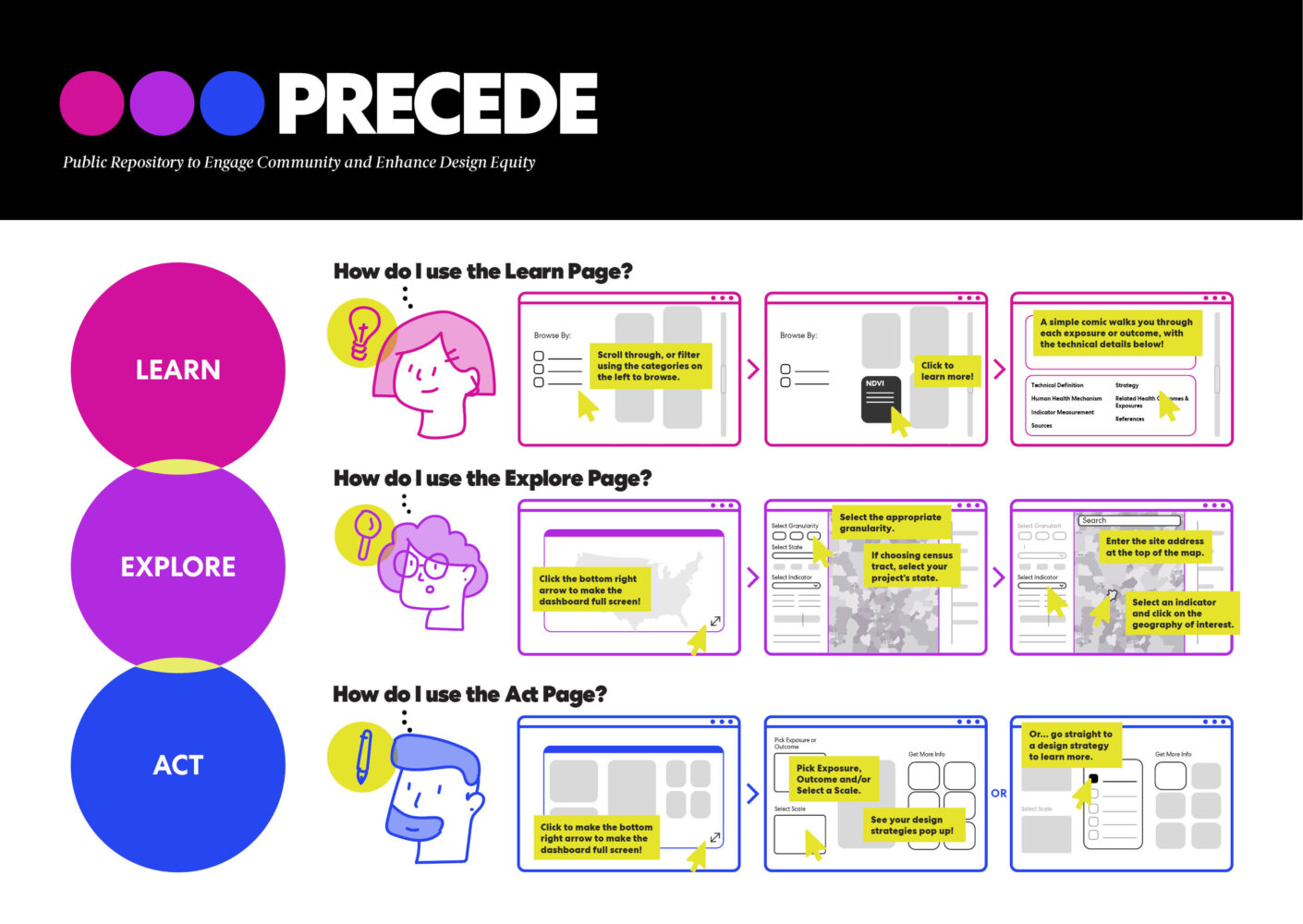Perkins&Will recently launched a free digital resource that allows architects and designers to access key public health data to inform design decisions.
The “Public Repository to Engage Community and Enhance Design Equity,” or PRECEDE, centralizes demographic, environmental, and health data from across the U.S. into a geospatial database. The online dashboard makes it easier for designers to gain insights to create a healthier built environment.
The tool can help interior designers, architects, and urban planners answer questions like:
How does our built environment contribute to asthma and obesity?
What is the median income, proximity to traffic, or prevalence of cancer at a state, county, or census tract level in a selected location?
What strategies can design teams use to mitigate relevant public health factors?
PRECEDE underwent two years of testing and development prior to its launch. The development of the tool was funded by a Transform Grant from the American Society of Interior Designers (ASID) Foundation. The research team is pursuing partnerships with individuals and organizations for future support and funding to expand the tool’s depth, rigor, and accessibility.
Related Stories
| Aug 19, 2011
Enhanced acoustical design
Ambient noise levels in some facility types are trending up and becoming a barrier to clear communication between building occupants.
| Jul 22, 2011
The Right Platform for IPD
Workstations for successful integrated project delivery, a white paper by Dell and BD+C.
| Jul 22, 2011
High-performance windows and doors
Learning objectives After reading this article, you should be able to: Understand issues of thermal performance and energy efficiency in relation to window and door systems; describe optimal detailing of the window-wall interface and how it contributes to building performance, sustainability, and occupant well-being; understand how durability contributes to sustainable windows/doors; and list sustainable O&M requirements for window and door systems.
| Jul 21, 2011
Falling Architecture Billings Index reflects decrease in design demands
This months Architecture Billings Index (ABI), provided by the American Institute of Architects, is almost a full point lower than last month’s reported score. June’s reading of 47.2 was short of the required 50 to achieve billings increases, making July’s reading of 46.3 an unwelcome sign of market tidings.
| Jun 29, 2011
New leadership role for architects in net-zero design
BD+C Editorial Director Rob Cassidy talks with RNL Design's Tom Hootman, AIA, about the changing role of architects in net-zero designs.














